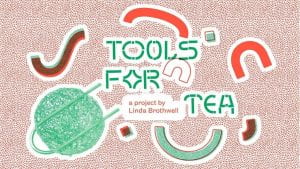One of our Centre for Environmental Humanities speakers last academic year was Eben Kirksey, an anthropologist at the University of Oxford. Among the themes he addressed in his talk was the value of integrating art and artists into environmental humanities research. Many of the members of our Centre already do this, and some members are artists themselves. For those of us who don’t already work with artists, it can be a little daunting to know where to start. Putting these two things together – the benefits of working with artists and the practical challenges of getting started – was the motivation behind inviting Georgia Hall to lead a day-long workshop on working with artists for the CEH in October 2023. Georgia is a curator from Bristol currently working in Switzerland who has extensive experience in supporting the facilitation of artist-academic collaborations.

The workshop aimed to share experiences of artist / academic projects & collaborations discuss learning and ways of working with artists and discover new ways of working with artists through sharing tips and considerations. The workshop began in the morning in the humanities research space at the University of Bristol. Georgia began by providing an overview of three different artistic collaborations she has been involved with, including Linda Brothwell’s Tools for Tea project in Knowle West, Earth Art Gallery, Earth Sciences Department at the University of Bristol and Art of the Anthropocene project at LSE. We then spent some time exploring the nature of these collaborations. There are broadly three types of collaboration between artists and academics.
- The first is where an academic approaches an artist to commission a piece of work based on a scholarship that has already been done.
- The second is where an artist seeks information from an academic about a particular topic to inform their practice.
- The third is a genuine partnership between an artist and an academic on a common project where the output is uncertain at the start and where the potential exists for real collaborative creativity.
None of these types of collaboration is fundamentally ‘better’ than the others, but Georgia stressed that it is important to be honest about the nature of the relationship from the beginning of a project. We then did a short exercise based on academic collaboration to explore these different forms of collaboration.
As part of this exercise, we considered the importance of all parties having a clear set of expectations about what they want to achieve through the collaboration and aligning these as far as possible. This process of alignment can be challenging, as different ‘outputs’ or results can be valued differently in different professional contexts, but it’s important to take time to ensure that all parties feel a sense of ownership over the process and its results. These differences in approach can also be a productive source of new ideas and creative thinking. For instance, one potential collaboration in the morning exercise explored how theoretical academic discussions about the representation or ‘figuration’ of alternative ecological futures could be reshaped by engaging with artistic representations of these futures.

In the afternoon we walked to Spike Island art gallery where we were given a short introduction to the Ofelia Rodríguez Talking in Dreams exhibition displaying a selection of over 70 paintings, drawings, prints and sculptures made over the past five decades. Displaying a combination of found objects and images rich in symbolism to construct humorous yet critical works that examine cultural identity and gender stereotypes, influenced by memories of Rodríguez’s native Barranquilla, on the Caribbean coast of Colombia. The group then discussed their impressions and reflections on the work.
We then continued the workshop in the associate’s research space. As Georgia suggested, it was a powerful experience to be taken out of our academic surroundings and spend the afternoon surrounded by working artists, demonstrating that collaborating with artists is not the same as collaborating with other academics.
We spent some time discussing some of the practical elements of these kinds of collaboration: It is important to pay artists for their time in the initial design phase of a joint project; an artist may not always be the best person to ‘tell the story’ of their artistic practice so hiring somebody to focus on outreach can be beneficial. Questions were raised about how academics might approach an artist and how they could verify the quality and impact of their work without prior knowledge of their work. This led to a conversation around being continually engaged in the arts as well as working with a trained curator or producer who would advise on contemporary art practice.
An important point that ran throughout the day is that the work of artists is itself research, and to get the most out of collaborations research must be given space to flourish.
Adrian Howkins, Milo Newman, Paul Merchant & Georgia Hall

